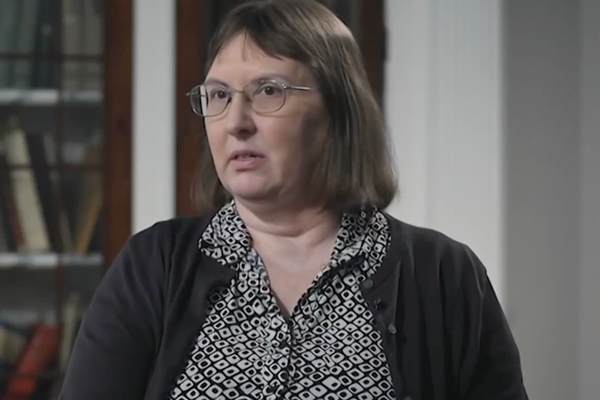On a dock overlooking a coil of Nacote Creek in Atlantic County, New Jersey, earlier this month, Stewart Farrell, director of Stockton University's Coastal Research Center, gave an impromptu master class on barrier islands, ancient geology, crab traps, coastal law, the Delaware Bayshore, and bulkheads.
Few people are as intimate with the shifting sands of time along New Jersey's coast as Farrell, 80, who is retiring next month after 51 years as one of the university's original faculty members.
A widely recognized authority on the Shore and its environment, Farrell has witnessed the impact of sea level rise from the bottom of the ocean up.
"It's real," he said.
Farrell is versed in rebuttals from climate-deniers that there has always been erosion at the Jersey Shore and that it has nothing to do with burning fossil fuels. He agrees climate and sea levels have always been part of gradual change. He noted that the ancient New Jersey coast was 75 miles farther east and that a "Little Ice Age" kept colonial New England snowy from September through May.
But human contribution to climate change is without doubt, he said. The acceleration is measurable.
"Starting around 1850, things started warming up," Farrell noted, "and, of course, that's when the wholesale burning of coal was underway and when the global economy was becoming dependent on fossil fuels."
The first real warnings that the climate was changing more rapidly than normal were sounded in the 1950s, Farrell said. Scientists then cautioned that warming would lead to changes in the atmosphere as well as an expanding ocean.
"No one was listening, or no one cared — or at least no one important enough to change things cared," he added.
Dealing with rising seas has already cost New Jersey hundreds of millions to install resilient infrastructure that can handle increasing amounts of high tide flooding and storm surges, he said. Superstorm Sandy in 2012 was a wakeup call for people in New Jersey to finally start caring, Farrell said.
Farrell gave examples of how climate change is affecting the Shore:
Sea level rise: Since 1910, Atlantic City has experienced 1.35 feet of sea level rise. A minimal rise of another 2 feet is projected from now through 2100, though the Federal Emergency Management Agency uses an intermediate rise of 4.65 feet in its flood calculations. The average elevation of Atlantic City varies between 12 feet at the dunes and 3 feet in the back bay. That means much of the city could be underwater regularly in the future during high tides and storm surges.
Flooding: Nuisance flooding, which occurs during high tides, has been increasing for years along the coast.
Barrier islands: Most barrier islands in New Jersey have an elevation of about 3 feet and salt marshes of about 1.5 feet. Dunes usually rise about 12 to 15 feet as protection. "If sea level rise is 2 or 3 feet in the next 50 years, that's where it's really going to get ugly," Farrell said.
Bayshore coast: The coast along the Delaware Bayshore is even lower. Waves there during Sandy rose about 5 feet.
Stormwater management: Many communities use gravity-fed storm systems to shed water during surges. But those are no longer sufficient. Long Beach Township is installing a 33 million gallon a day storm water pump station and a 20 million gallon a day treatment pump to handle surges along its 18-mile border at a cost of about $18 million. Upgrades are underway, or being considered, in other coastal towns.
Bulkheads: Thousands of private property owners with bulkheads protecting them from the bay and ocean will also bear costs. Stone Harbor, for example, updated its code in recent years to require that bulkheads be a minimum 8 feet above a specified tide height, that they be watertight, and consistently maintained. A single bulkhead can cost thousands into the tens of thousands depending on the length.
This month, the National Oceanic and Atmospheric Administration projected sea level along the U.S. coastline to rise, on average, 10-12 inches between 2020 and 2050 — as much as the rise measured over the previous 100 years. However, the rise in New Jersey could be worse as sea level rise varies regionally because of changes in both land and ocean height. New Jersey is also slowly sinking due to its geology.
Most attempts to preserve beaches for any length of time have been futile and will only get costlier, Farrell said. He noted that the federal government, DEP and communities have spent $1.3 billion dollars to pump 140 million cubic yards of sand on beaches between Sea Bright in Monmouth County, and Cape May Point in Cape May County. The bulk of that has occurred since 1989.
"Most of that material has just gone out to sea, moved somewhere else, or ended up on another beach," Farrell said. "We know that 3 million yards of sand went right into Sandy Hook National Seashore from Sea Bright and Long Branch. And it's on its way south in Avalon and Stone Harbor. Wildwood's beaches have expanded 800 feet since 1986. North Wildwood's beach has retreated by 1,125 feet since 1986."
"So the changes are quite real," he added.
Originally from Asbury Park, Farrell had only recently earned a PhD in coastal processes and Pleistocene geology from the University of Massachusetts Amherst when he applied to teach at Stockton when it opened in 1971 along Atlantic City's boardwalk. He went on to help create the university's marine science program.
In 1986, Stewart was named director of the coastal research center, which was designed to help local municipalities with storm damage and beach erosion.
The center has contracts with the state's Department of Environmental Protection, U.S. Army Corps of Engineers and private companies to provide monitoring and data regarding the shoreline. It publishes exhaustive reports on the state of New Jersey's beaches.
Farrell said his biggest success at the center has been seeing students succeed as scientists. He stopped teaching a decade ago, but uses students to conduct research. Some who like to surf don their wetsuits and are sent to take measurements in the ocean even in the chilly depths of February.
Students have gone to work for the Department of Environmental Protection, Army Corps, and private firms, spreading out as far as Alaska and Texas.
"We've had probably 150, 200 kids come through here in 36 years learning to do science in the field," Farrell said. "Real science in the field."







